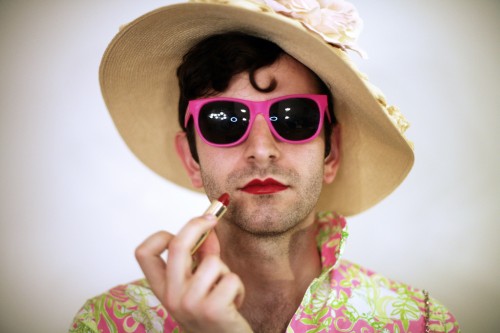Beyond the clever play-on-words I’ve so bravely attempted for a title (so sorry Ms. Austin), this blog-post is an effort to verbalize my very personal and embarrassingly recent realization regarding heritage of the oppressed, particularly women and LGBTQ individuals.
When I was growing up, my grandmother asked me why Gay Pride existed. “What’s the need for celebrating one’s sexuality?” to which she added something along the lines of “I’m fine with the gays, but you don’t see me and my friends running around the streets celebrating that we’re heterosexuals, do you?” At the time I didn’t really have an answer for her, but I do wish she could read this post, having been a proud feminist herself.
I was casually perusing the Internet and came across the English Heritage Blog, in which Jamie Bellinger wrote ‘Follow in the footsteps of women who made history’, a London guide to the blue plaques scattered around the British capital commemorating the lives of women who’s work…well, changed history. Now, having worked in fashion and media, I admit to being fatally attracted to trending topics. Whether it’s the inexplicable allure of the Kardashians, Trump’s latest tweet or the pre-Brexit panic, I tend to be drawn to ‘popular’ stories. That’s probably why the blog’s title called my attention in the first place. In the midst of what is nothing short of a gender revolution triggered by the Weinstein debacle, feminism has finally got the general limelight and therefore my undivided attention. Yes, I admit it: I knew feminism was around, but much like my grandmother and the gays I didn’t really know why women felt the need to fight about their sexuality. BIG, shameful, embarrassing mistake, I know.
Over the past couple of months, however, I too have become a feminist. Not because it’s cool or because it’s ‘very 2018’ –as one (now former) friend was quick to point out- but because given the evidence, it’s impossible not to. What women have shown the rest of us over the past couple of months is the warm evidence of just how hegemonic masculinity operates, why it’s far from defeated, and why we must all join in. London’s blue plaques, for example, are blue not because of a feministic whim to be different, but because in some cases they were otherwise excluded from the city’s mainstream heritage routes. Women, it seems, have no immediate claim to remembrance, regardless of having achieved things as huge and impressive as being the world’s first computer programmer. This mainstream exclusion gives rise to heritage of the oppressed.
This reminded me of Alan Turring, a gay man (portrayed by Benedict Cumberbatch in The Enigma Code) whose talented mind saved Britain from Nazi invasion by cracking the German communication code. Not so much did it remind me of Turring’s presence in history, but on the contrary of his absence.
As with women, LGBTQ individuals have been excluded from mainstream heritage, and hence been driven into Heritage of the oppressed. As a newborn feminist, I’m drawn to believe that the reason behind this two-sided exclusion isn’t so much against homosexuality, but against femininity.
As Sremac and Ganzevoort put it, masculinity, and therefore sexuality itself, is relational concept: all forms (of sexuality) relate to each other in a specific way. By establishing a hegemonic and legitimate form of masculinity, there automatically exists a marginalized version of it, which indistinctively includes traces of femininity. With hegemonic masculinity at the op of the gender hierarchy, the subordinate forms of masculinity are left at the subordinate bottom.
The cause of feminism against the patriarchy is therefore also a gay cause. It isn’t only about men v/s women, but about a hegemonic masculinity using its web of violence and power to marginalize any other genders and expressions of femininity. At the same time, Pride isn’t only about homosexuality, but about sexual diversity and expression, including the right to be feminine and express femininity without it leading to any form of subordination.
